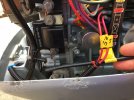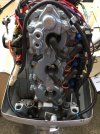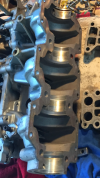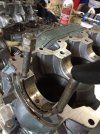Bordeau
Active Member
I have completed a rebuilt of a 60hp Envinrude 1988 model # E60ELCCR and I am puzzled. The engine starts but backfires and runs only on cylinder 2. When I disconnect spark plug #1 and 3, no change in RPM or the way it runs.
The timing light shows cylinder #2 firing at the correct time. I am confused as to why #1 and #3 spark plugs ignite in reverse order. I marked all 3 cylinders’ TDC. When the timing light is plugged on cylinder #1, it shows my TDC mark for cylinder #3. When I move the timing light to cylinder #3, it shows that cylinder #1 is firing just before #1’s TDC mark.
I labelled all wires before taking them off and now I am thinking I might not have been so diligent after all. Is it possible that I crossed 2 wires? If so which ones?
The timing light shows cylinder #2 firing at the correct time. I am confused as to why #1 and #3 spark plugs ignite in reverse order. I marked all 3 cylinders’ TDC. When the timing light is plugged on cylinder #1, it shows my TDC mark for cylinder #3. When I move the timing light to cylinder #3, it shows that cylinder #1 is firing just before #1’s TDC mark.
I labelled all wires before taking them off and now I am thinking I might not have been so diligent after all. Is it possible that I crossed 2 wires? If so which ones?





